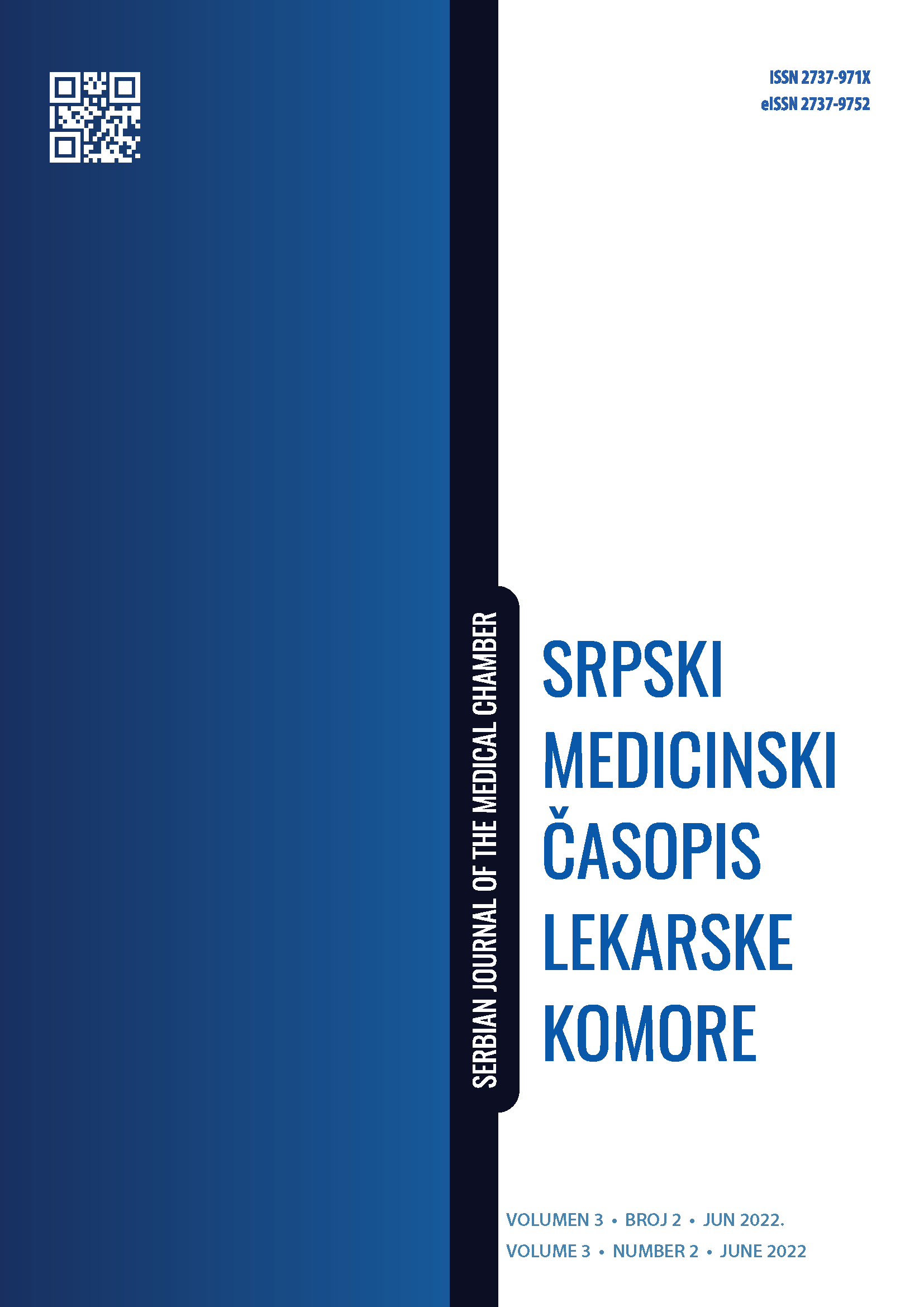ACQUIRED HEMOPHILIA IN PATIENTS ON ORAL ANTICOAGULANT THERAPY – CASE REPORT
Abstract
Introduction: Acquired hemophilia is a severe, sometimes even fatal condition of impaired coagulation. It most often leads to severe mucocutaneous, gastrointestinal, urinary, and, rarely, intracranial bleeding. This disorder occurs due to the production of antibodies against clotting factor VIII (F VIII), which interfere with its normal function. In laboratory analyses, prolonged activated partial thromboplastin time (aPTT), which cannot be normalized after being mixed with pooled normal plasma, is noticeable.
Case report: In this article, the clinical course of the disease is described in a patient with acquired hemophilia, who was treated with oral anticoagulant therapy, and who initially also had prolonged prothrombin time, measured in international normalized ratio (INR) units, which measure how long it takes for a clot to form in a blood sample. Hemorrhagic syndrome was explained by iatrogenic effect. However, since bleeding continued after INR normalization, it was suspected that there was a different cause of hemorrhagic syndrome. The aPTT mixing test was performed (mixing an equal volume of the patient's plasma and normal pooled plasma (NPP) and repeating the aPTT test immediately and after one-hour incubation), after which the aPTT remained prolonged. This proved the presence of coagulation inhibitors, which is why acquired hemophilia was suspected. The patient was referred to a tertiary medical institution for further diagnostics and treatment.
Conclusion: The objective of this case report is to show that patients with hemorrhagic syndrome, who are on anticoagulant therapy, may develop hemorrhagic syndrome for a different, non-iatrogenic reason. The purpose of the study is to draw the attention of medical doctors to various causes of hemorrhagic syndrome in patients receiving anticoagulant therapy.
References
Literatura/References
1.Delgado J, Jimenez-Yuste V, Hernandez-Navarro F, Villar A. Acquired haemophilia: review and meta-analysis focused on therapy and prognostic factors. Br J Haematol. 2003;121: 21-35.
Wiley Online LibraryCASPubMedWeb of Science®Google Scholar
- Michiels JJ.Acquired hemophilia A in women postpartum: clinical manifestations, diagnosis, and treatment.Clin Appl Thromb Hemost.2000;6:82–86.
CrossrefCASPubMedWeb of Science®Google Scholar
3 Napolitano M, Siragusa S, Mancuso S, Kessler CM. Acquired haemophilia in cancer: a systematic and critical literature review. Haemophilia. 2018;24(1):43-56.
[PubMed] [Google Scholar]
4. Reeves BN1, Key NS. Acquired hemophilia in malignancy. Thromb Res. 2012April;129(Suppl 1):S66–8. [PubMed] [Google Scholar]
5. Knoebl P, Marco P, Baudo F, et al. EACH2 registry contributors. demographic and clinical data in acquired hemophilia A: results from the European Acquired Haemophilia Registry (EACH2). J Thromb Haemost. 2012April;10(4):622–631. [PubMed] [Google Scholar]
6. How I manage patients with acquired haemophilia A. Sborov DW, Rodgers GM. Br J Haematol.2013;161:157–165. [PubMed] [Google Scholar]
- Huth-Kuhne A, Baudo F, Collins P, et al. International recommendations on the diagnosis and treatment of patients with acquired hemophilia A. Haematologica. 2009;94(4):566-575. [PMC free article] [PubMed][Google Scholar]
- Tiede A., Werwitzke S., Scharf R. E. Laboratory diagnosis of acquired hemophilia A: limitations, consequences
- Tiede A., Collins P., Knoebl P., et al. International recommendations on the diagnosis and treatment of acquired hemophilia A. Haematologica. 2020;105(7):1791–1801.
[PMC free article] [PubMed] [Google Scholar]
- Kershaw G., Orellana D. Mixing tests: diagnostic aides in the investigation of prolonged prothrombin times and activated partial thromboplastin times. Seminars in Thrombosis and Hemostasis. 2013;39(3):283–290.doi: 10.1055/s-0033-1336832.
[PubMed] [CrossRef] [Google Scholar]
- Yousphi AS, Bakhtiar A, Cheema MA, Nasim S, Ullah W. Acquired hemophilia A: a rare but potentially fatal bleeding disorder. Cureus. (2019) 11:e5442. 10.7759/cureus.5442
[PMC free article] [PubMed] [CrossRef][Google Scholar]
- Tengborn L, Baudo F, Huth-Kuhne A, et al.Pregnancy-associated acquired haemophilia A: results from the European Acquired Haemophilia (EACH2) registry. BJOG. 2012;119(12):1529-1537.

